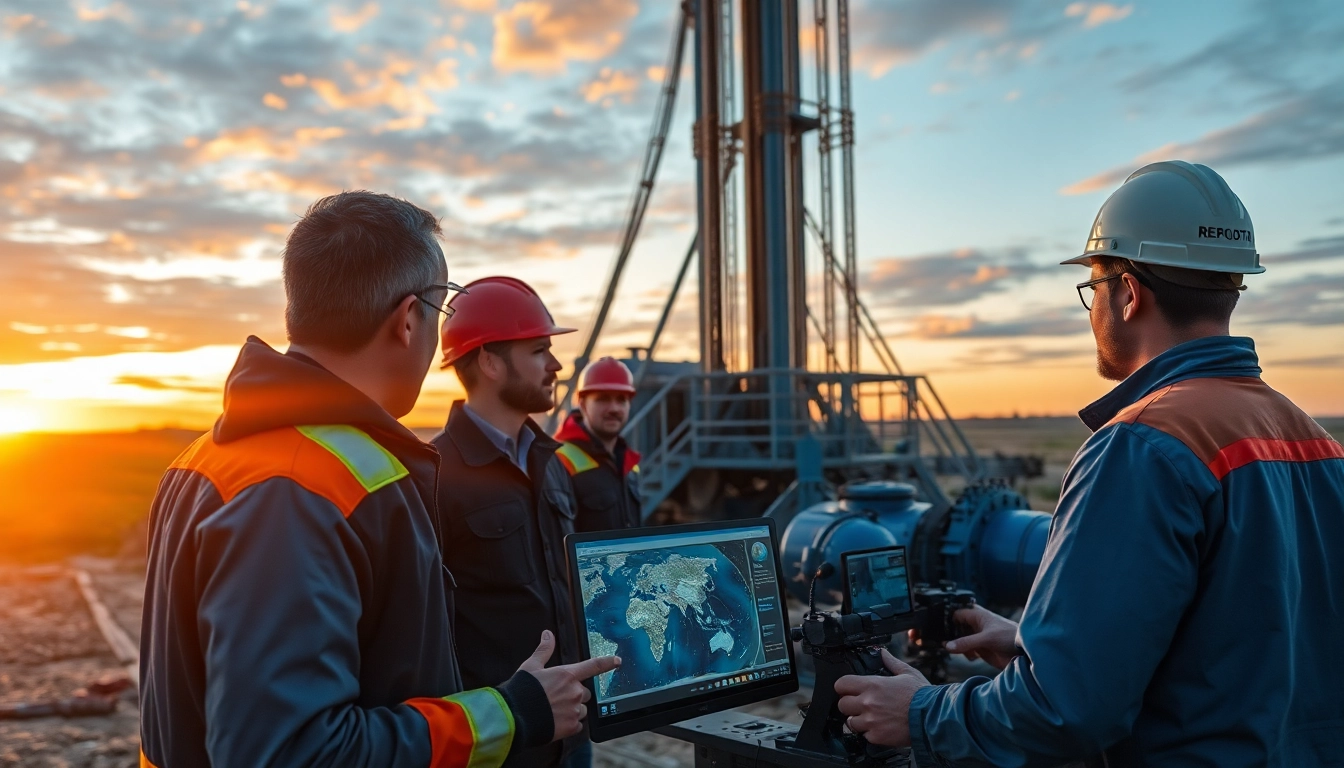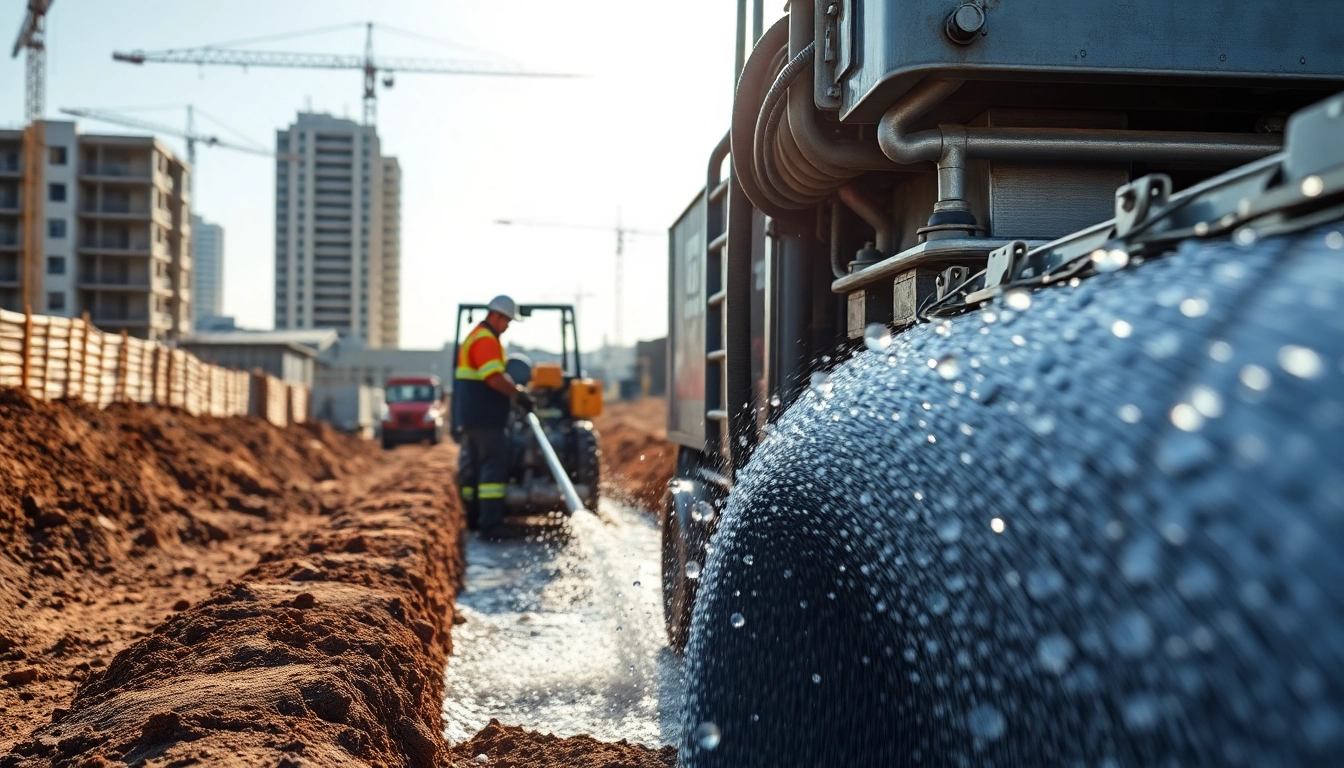Introduction to Geosteering Techniques
Geosteering is an innovative technology that has transformed the oil and gas industry by leveraging real-time data to optimize the drilling process. By integrating geological, geophysical, and drilling data, geosteering techniques allow for precise navigation of wellbores within the subsurface environment, ultimately maximizing resource extraction efficiency. As the industry evolves, understanding the foundational elements of geosteering becomes imperative for practitioners and stakeholders alike. For comprehensive insights into the methodologies and advancements in geosteering, you can refer to www.geosteeringvision.com.
Understanding the Basics of Geosteering
The fundamental concept of geosteering revolves around the real-time application of data collected from various sources, including geological surveys, well logs, and downhole sensors. Operators utilize this data to adjust the trajectory of the wellbore during drilling, ensuring that it remains on target relative to the desired geological formations. This dynamic approach contrasts with traditional drilling methods, which often follow a fixed path determined before drilling begins.
Importance of Real-time Data in Drilling
Real-time data collection is at the heart of effective geosteering practices. The ability to monitor crucial parameters—such as pressure, temperature, and rock composition—allows teams to make informed decisions on-the-fly. Today’s advancements in sensor technology and data processing enable instant access to essential information, which leads to:
- Optimized well placement: Precise steering reduces the risk of drilling into unwanted formations, minimizing non-productive time.
- Improved reservoir access: Successful navigation through variable geological structures increases the likelihood of reaching high-yield areas.
- Cost-efficiency: By integrating continuous data monitoring, companies can effectively manage drilling costs and enhance overall profitability.
Key Challenges in Geosteering
While geosteering presents significant advantages, there are challenges that professionals must navigate. Common issues include:
- Data accuracy: Inconsistent data quality can lead to misguided steers, increasing the risk of costly drilling errors.
- Complex geology: Variabilities in geological formations can complicate drilling strategies, necessitating advanced analytical techniques and experience.
- Integration of technologies: Merging various data sources and technologies requires robust infrastructure and skilled personnel.
Technologies Enhancing www.geosteeringvision.com
Advanced Software Solutions
Innovative software plays a pivotal role in advancing geosteering capabilities. Applications designed specifically for geosteering streamline data visualization and analysis. These tools enable operators to simulate various drilling scenarios, assess risks, and forecast outcomes based on real-time inputs. Key features often include:
- User-friendly interfaces: Simplified dashboards enhance usability, allowing operators to focus on decision-making rather than data manipulation.
- Integration capabilities: Advanced software solutions can assimilate data from multiple sources, fostering a holistic view of drilling operations.
- Predictive analytics: Data-driven forecasting informs future drilling strategies, optimizing exploration efforts and resource allocation.
Integration of Geological Data
Effective geosteering relies on the seamless integration of diverse geological datasets. By consolidating geological, geophysical, and drilling information, teams can develop clearer insights into subsurface conditions. Techniques such as:
- 3D geological modeling: Creating detailed models allows for more accurate planning and risk assessment.
- Machine learning algorithms: Utilizing ML techniques can enhance data interpretation, enabling better predictions of geological behavior.
The successful integration of these technologies significantly improves the overall drilling process, reducing uncertainty and enhancing outcome predictability.
Role of Sensors and Measurement Tools
Real-time sensors and measurement tools are indispensable in the geosteering process. These devices track various metrics, including:
- Drilling parameters: Monitoring parameters such as rate of penetration and torque helps engineers make timely adjustments.
- Geological properties: Sensors provide critical insights into the geological formation being drilled, enabling adjustments based on actual conditions.
- Wellbore position: Accurate tracking of the wellbore trajectory is vital for maintaining the desired drill path.
Additionally, advancements in wireless technology allow for the real-time transmission of data, further enhancing decision-making processes.
Best Practices for Efficient Geosteering
Preparing Your Team for Geosteering Success
Successful implementation of geosteering techniques begins with team preparedness. Ensuring that personnel are well-trained and knowledgeable about geosteering principles is crucial. Recommended practices include:
- Regular training sessions: Ongoing education ensures that team members stay up-to-date with the latest tools and methodologies.
- Cross-training: Equipping team members with diverse skills promotes flexibility in operations and enhances collaborative problem-solving.
- Simulation exercises: Conducting simulated drilling scenarios helps team members develop their decision-making abilities in high-pressure situations.
Effective Communication Strategies
In the realm of geosteering, communication is paramount for success. Ensuring that interdisciplinary teams work cohesively involves:
- Centralized data access: Providing all stakeholders with access to the same updated data promotes transparency and informed decision-making.
- Regular briefings: Conducting daily or shift-end briefings ensures everyone is aligned on objectives and current conditions.
- Feedback loops: Establishing mechanisms for feedback encourages continuous improvement and collective learning among team members.
Continuous Improvement and Learning
To adapt to the ever-evolving geological landscapes and advancing technologies, the focus on continuous improvement is vital. Companies should:
- Conduct post-project reviews: Analyzing successes and failures fosters a culture of learning that can enhance future projects.
- Invest in R&D: Allocating resources towards research and development can lead to innovative geosteering techniques and technology enhancements.
- Join industry forums: Participating in conferences, workshops, and collaborative platforms facilitates knowledge-sharing and exposes teams to new ideas.
Case Studies: Success Stories in Geosteering
Notable Projects Showcasing Efficiency
A variety of case studies exist that highlight the effectiveness of geosteering techniques. For instance, projects involving complex geological formations have successfully utilized geosteering to:
- Maximize resource extraction: By employing precise navigation strategies, operators achieved heightened production rates.
- Reduce drilling time: Wellbore adjustments made possible through real-time data minimized overall drilling cycles.
Key Takeaways from Real-World Applications
These successful implementations provide valuable lessons, such as:
- The value of adaptation: Flexibility in drilling strategies based on real-time data can yield better results.
- Importance of collaboration: Interdisciplinary teamwork significantly enhances decision quality and response times.
Lessons Learned for Future Projects
Reflecting on previous projects, common themes have emerged that can guide future geosteering efforts:
- Data integrity is crucial: Ensuring the quality and reliability of data sources is fundamental for successful geosteering.
- Investing in technology pays off: Upgrading to advanced tools and technology correlates with improved drilling performance and risk mitigation.
Future Trends in Geosteering Techniques
Impact of Artificial Intelligence on Drilling
Artificial intelligence (AI) is poised to revolutionize geosteering practices. The integration of AI can enhance predictive analytics, aiding in:
- Data interpretation: Machine learning algorithms can identify patterns and correlations that may not be readily observable, informing operational strategies.
- Decision-making processes: AI-assisted decision tools can provide recommendations based on historical data and real-time analyses, streamlining operator responses.
Emerging Technologies to Watch
As technology continues to advance, several areas hold promise for improving geosteering methods, including:
- Blockchain for data security: Implementing blockchain technology could enhance data integrity, ensuring secure and transparent data transfer.
- Advanced visualization techniques: 3D and augmented reality tools could facilitate better understanding of subsurface geology, allowing for improved planning and execution.
Preparing for Industry Changes
As the oil and gas industry faces evolving challenges and opportunities, preparation is crucial. Companies must remain agile and proactive by:
- Investing in workforce development: Ensuring that team members are equipped with the skills needed for advanced technologies is essential.
- Monitoring regulatory changes: Staying informed about shifts in regulations can help companies remain compliant and competitive.
- Pursuing sustainability initiatives: As the industry shifts towards greener practices, integrating sustainability into drilling operations will become increasingly important.















Leave a Reply